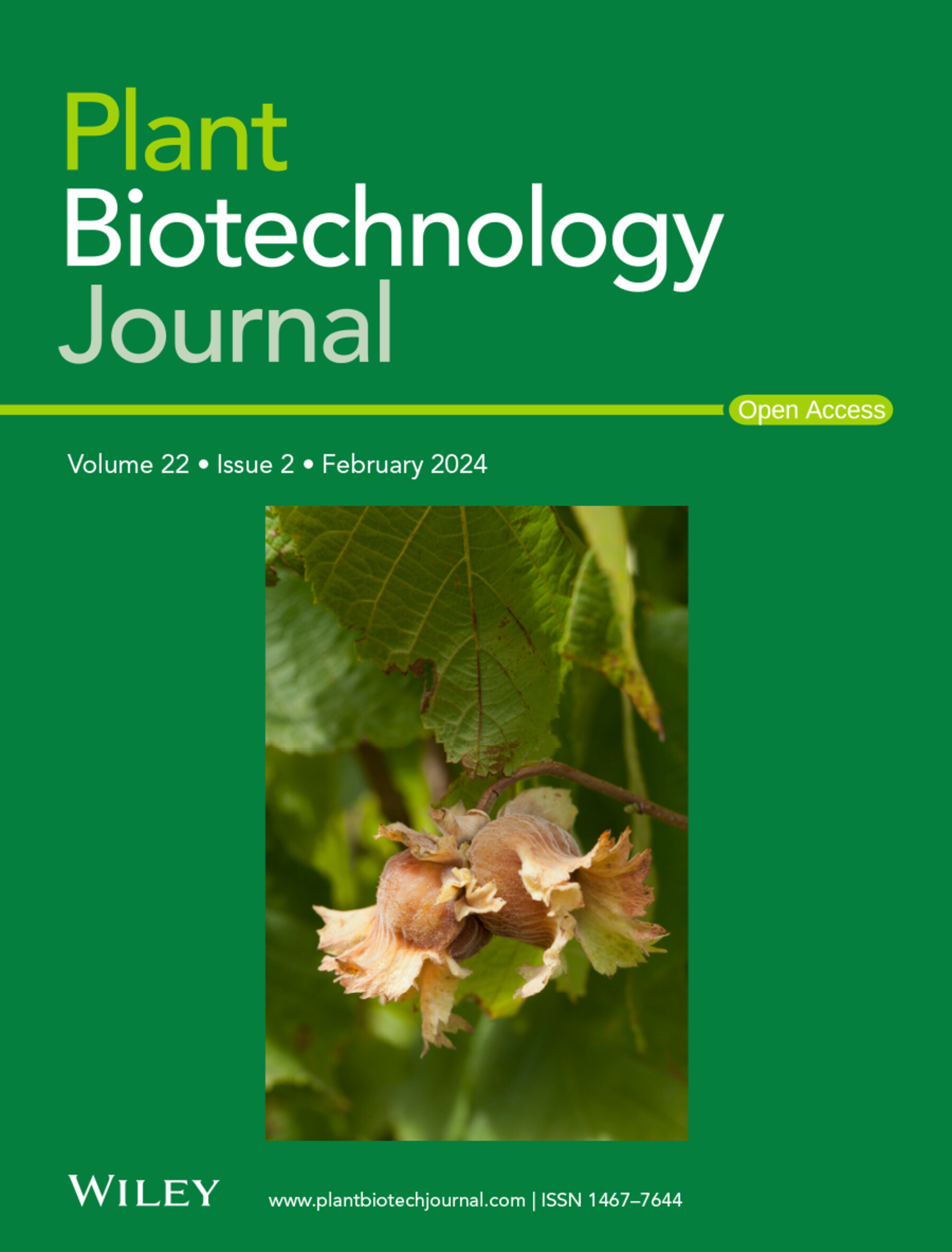High‐Efficiency and Eco‐Friendly Management of Multiple Fungal Diseases by a Novel Carbon Dots sCDP Delivered RNA Nano‐Pesticides
IF 10.5
1区 生物学
Q1 BIOTECHNOLOGY & APPLIED MICROBIOLOGY
引用次数: 0
Abstract
RNA‐based pesticides represent a transformative approach in agricultural disease management, offering an environmentally sustainable alternative to conventional chemical fungicides. However, key challenges such as rapid RNA degradation in the environment and inefficient uptake hinder widespread adoption. Nanocarriers have the potential to significantly enhance RNA delivery efficiency and stability, which holds great promise for developing eco‐friendly strategies in crop protection. Here, we developed a novel multicomponent nano‐biopesticide platform utilising novel polyethyleneimine‐modified carbon dots (sCDP) for dsRNA delivery. It was demonstrated that sCDP forms stable electrostatic complexes with dsRNA (sCDP‐dsRNA), conferring dual protective advantages and enhanced RNA stability with extended foliar persistence exceeding 14 days. Moreover, the sCDP can significantly reduce the contact angle of dsRNA on the leaf surface, and the complexation of sCDP with dsRNA remarkably enhances uptake efficiency into plant leaves and pathogens' mycelium, thereby enhancing plant protection of RNA pesticides. Additionally, sCDP exhibits good biocompatibility and low toxicity against pathogens and plants. Finally, it was demonstrated that sCDP‐dsRNA complexes showed significant efficacy in preventing and treating rice sheath blight, both in laboratory and field conditions. Moreover, the platform demonstrated broad‐spectrum antifungal activity against four major pathogens including新型碳点sCDP递送RNA纳米农药对多种真菌病害的高效环保治理
基于RNA的农药代表了农业疾病管理的一种变革方法,为传统化学杀菌剂提供了一种环境可持续的替代品。然而,关键的挑战,如RNA在环境中的快速降解和低效率的吸收阻碍了广泛采用。纳米载体具有显著提高RNA传递效率和稳定性的潜力,这对作物保护中生态友好策略的开发具有很大的前景。在这里,我们开发了一种新的多组分纳米生物农药平台,利用新型聚乙烯亚胺修饰的碳点(sCDP)来递送dsRNA。结果表明,sCDP与dsRNA形成稳定的静电配合物(sCDP - dsRNA),具有双重保护作用,并增强了RNA的稳定性,叶面持续时间超过14天。此外,sCDP可以显著降低dsRNA在叶片表面的接触角,sCDP与dsRNA的络合作用显著提高了dsRNA对植物叶片和病原菌菌丝的吸收效率,从而增强了RNA农药对植物的保护作用。此外,sCDP具有良好的生物相容性和对病原菌和植物的低毒性。结果表明,sCDP - dsRNA复合物在实验室和田间条件下均具有显著的防治水稻纹枯病的效果。此外,该平台在不同条件下对黑曲霉、灰霉病菌、稻谷Magnaporthe oryzae和pachopsora pachyr四种主要病原体均表现出广谱的抗真菌活性。因此,该纳米平台通过将RNA干扰的精度与增强的传递能力协同起来,建立了一种高效且环境可持续的作物保护范例。
本文章由计算机程序翻译,如有差异,请以英文原文为准。
求助全文
约1分钟内获得全文
求助全文
来源期刊

Plant Biotechnology Journal
生物-生物工程与应用微生物
CiteScore
20.50
自引率
2.90%
发文量
201
审稿时长
1 months
期刊介绍:
Plant Biotechnology Journal aspires to publish original research and insightful reviews of high impact, authored by prominent researchers in applied plant science. The journal places a special emphasis on molecular plant sciences and their practical applications through plant biotechnology. Our goal is to establish a platform for showcasing significant advances in the field, encompassing curiosity-driven studies with potential applications, strategic research in plant biotechnology, scientific analysis of crucial issues for the beneficial utilization of plant sciences, and assessments of the performance of plant biotechnology products in practical applications.
 求助内容:
求助内容: 应助结果提醒方式:
应助结果提醒方式:


